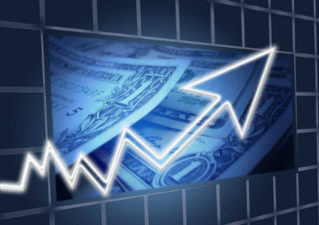Some people don’t invest in stocks at all. They think it’s too risky. After all, they have heard stories of people losing their life savings in the stock market.
I don’t think it suffices to merely say that stocks are risky. There are different definitions of risk, and risk means different things to different people. Self-directed investors should take some time to explore how risky their stocks are.
Do your investments deliver the returns you need?
What criteria does a stock need to have such that it’s low risk enough for you to buy and delivers the returns or income you need? I think this is a better question than the one in the title.
For example, investors will experience another type of risk if they only put their savings in GICs, only to realize at retirement that they don’t have enough savings to maintain their lifestyles.

Stable dividend stocks tend to be lower-risk investments
Some investors only invest in stable businesses that grow their dividends. They see that as a lower-risk way of investing.
Having a long history of growing dividends is a good indicator of a company’s commitment to its dividend. It shows that such a company has the ability to generate stable earnings or cash flow over time.
Enbridge pays a growing dividend
Since 1949, Enbridge Inc. (TSX:ENB)(NYSE:ENB) has grown into a $165 billion enterprise value business and has changed a lot. There’s one thing that will probably not change, and that is Enbridge’s stable dividend.
Enbridge has paid a dividend for 64 years and has increased its dividend for 21 consecutive years. This track record of dividends indicates that it is ingrained in Enbridge’s culture to pay a strong dividend.
Right now, management intends to pay out 50-60% of the company’s available cash flow as dividends. This allows for dividend growth (i.e., happy shareholders) while retaining sufficient cash flows to pay down debt and grow the business. With the growth projects in place, Enbridge aims to grow its dividend per share by 10-12% per year through 2024.
Is Enbridge risky?
In the last few years, Enbridge stock probably hasn’t been an easy holding for its shareholders. For example, the stock declined about 36% from peak to trough in 2015. So, if you define risk as volatility, you might find Enbridge to be risky.
Paying a discounted price for a business is one way to reduce risk. Enbridge happens to be relatively attractive today. It offers a ~5% yield, which we don’t see very often with the dividend-growth star.
The company is in the needed business of transporting, distributing, and generating energy. With its complex pipeline system, Enbridge transports 28% of the crude oil produced in North America, and it transports 20% of the natural gas used in the United States. So, the North American energy infrastructure leader isn’t going away anytime soon.
Lower risk when investing in stocks
Generally speaking, you can lower your risk by keeping the following in mind: earnings, cash flow stability, and growth reduce the risk of a company. The lower the valuation you pay for a business, the lower the risk. Dividend-paying (particularly dividend-growth) stocks are also lower risk.









